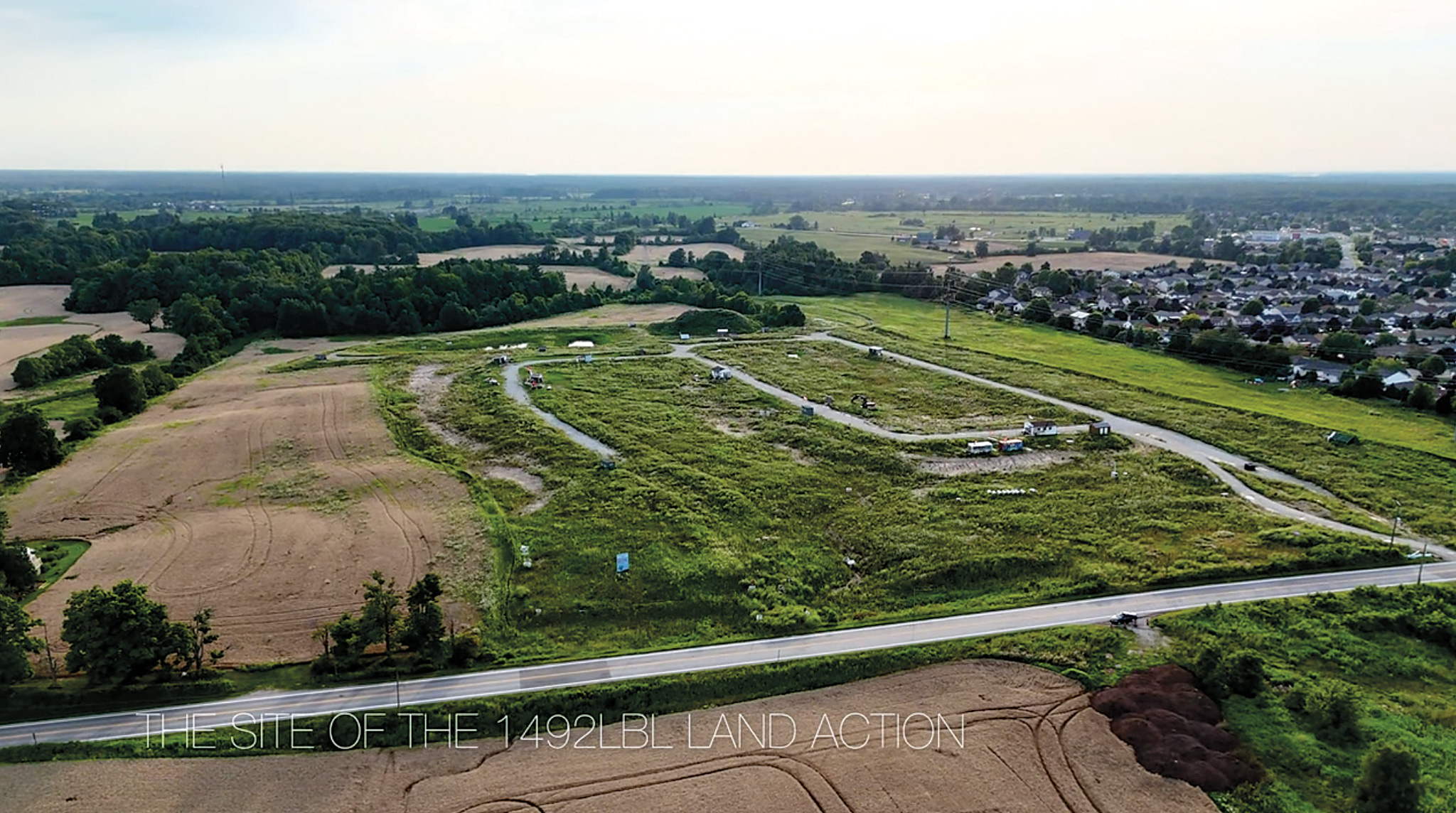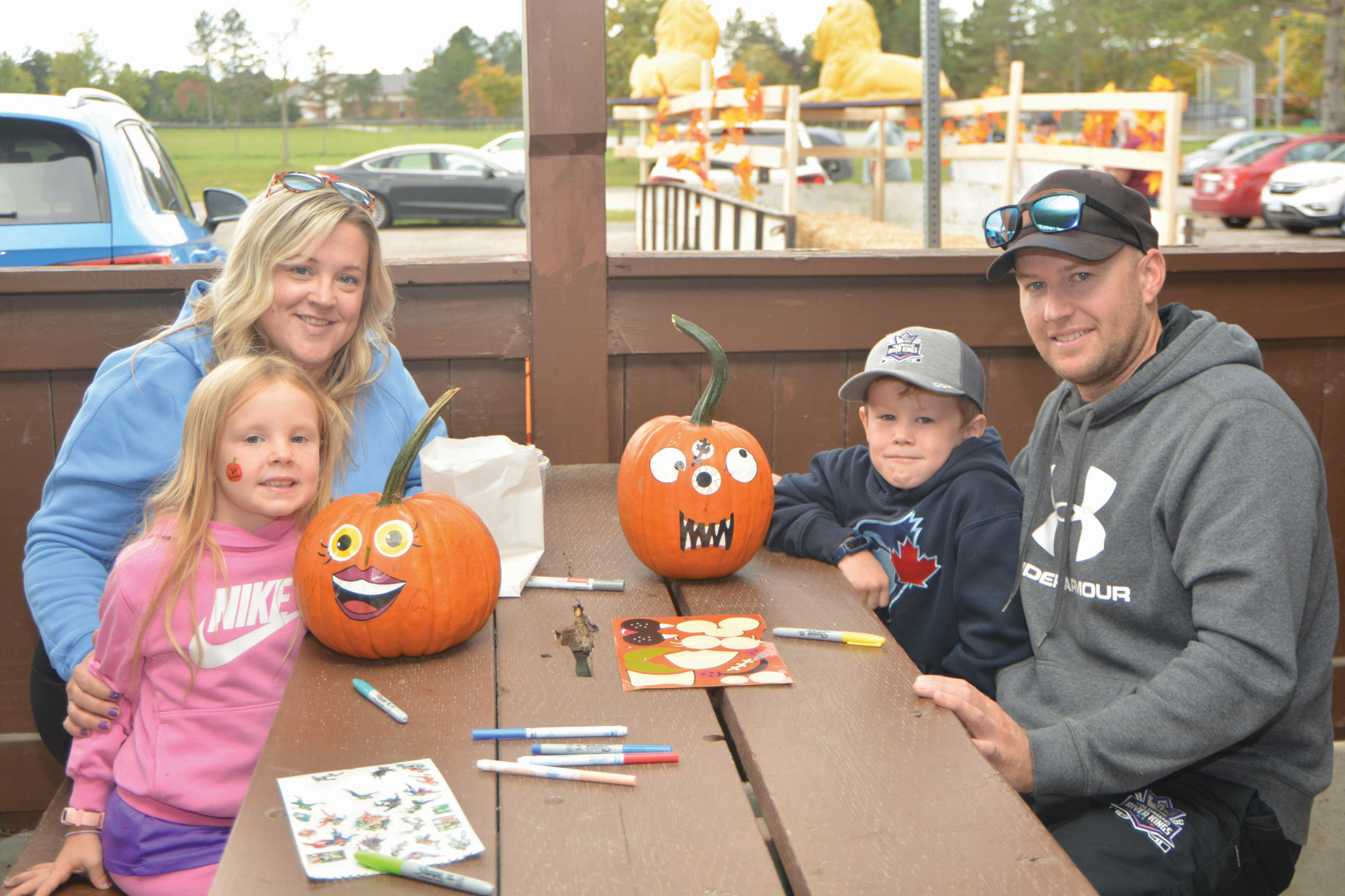DUNNVILLE—A timber harvest currently taking place behind the Dunnville Memorial Arena raised concerns for Lincoln-based small business owner and nature lover Carla Carlson.
The lot where the work is taking place is known as the Pyle Woodlot. It is a large, dense grouping of trees clustered together behind the arena. According to a sign outside the lot, forest access in the vicinity is closed until completion of the work, scheduled for September 30, 2024.
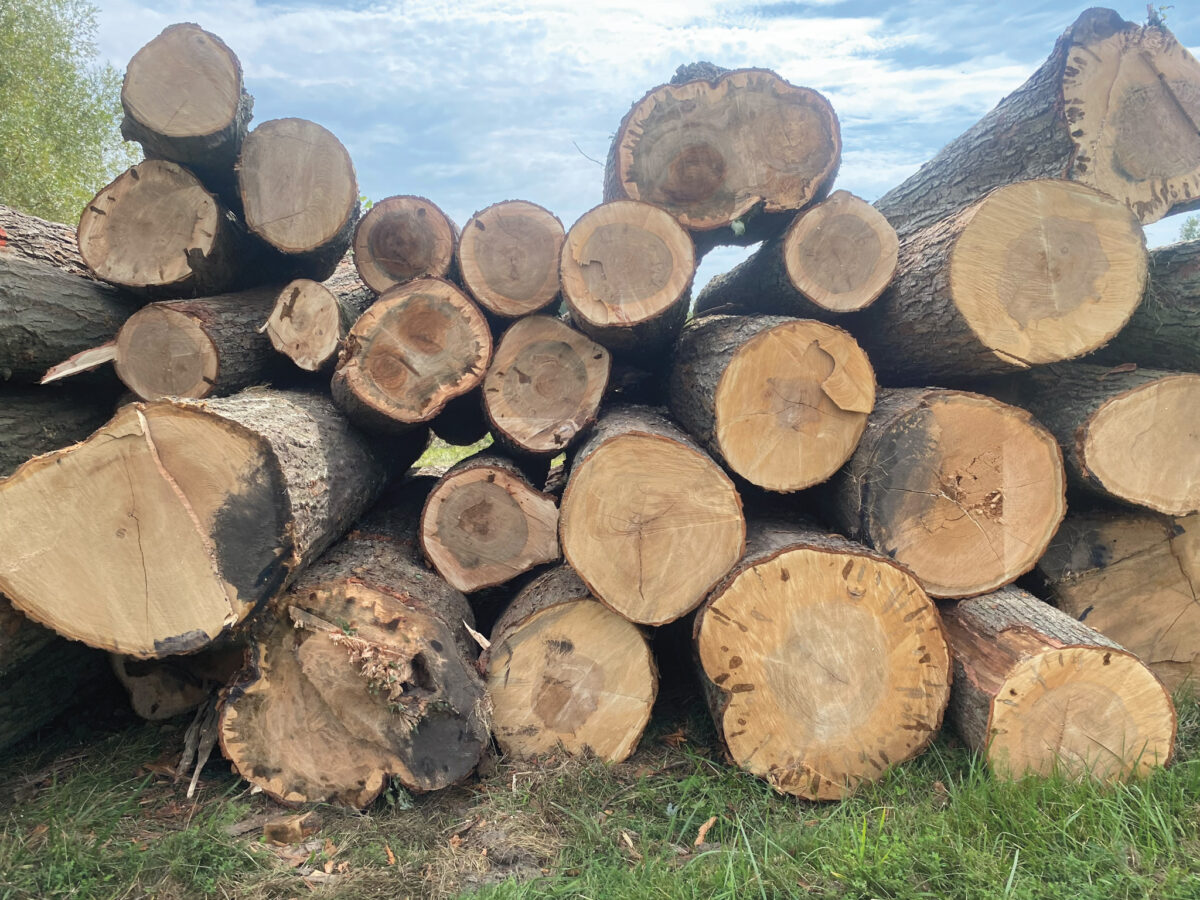
Carlson said she was made aware of the harvesting work by a Dunnville resident who knew about her environmental advocacy work in the Thorold area.
“He said in the past he’s measured red oak in there as over 105 feet tall and 120 inches in diameter. Those are old trees (that) are important for the health of that forest, wildlife, and do the most for cleaning the air compared to younger smaller trees,” said Carlson in her initial email.
Carlson reached out to Haldimand County, speaking with Public Works General Manager Dan McKinnon and Councillor Patrick O’Neill about her concerns, in addition to attempting to contact Mayor Shelley Ann Bentley.
Carlson was curious about how the County came to own the lot and what the intentions of the original seller were: “I doubt they were to log out the oldest trees for lumber and to make money for someone, even if it is the town,” she said.
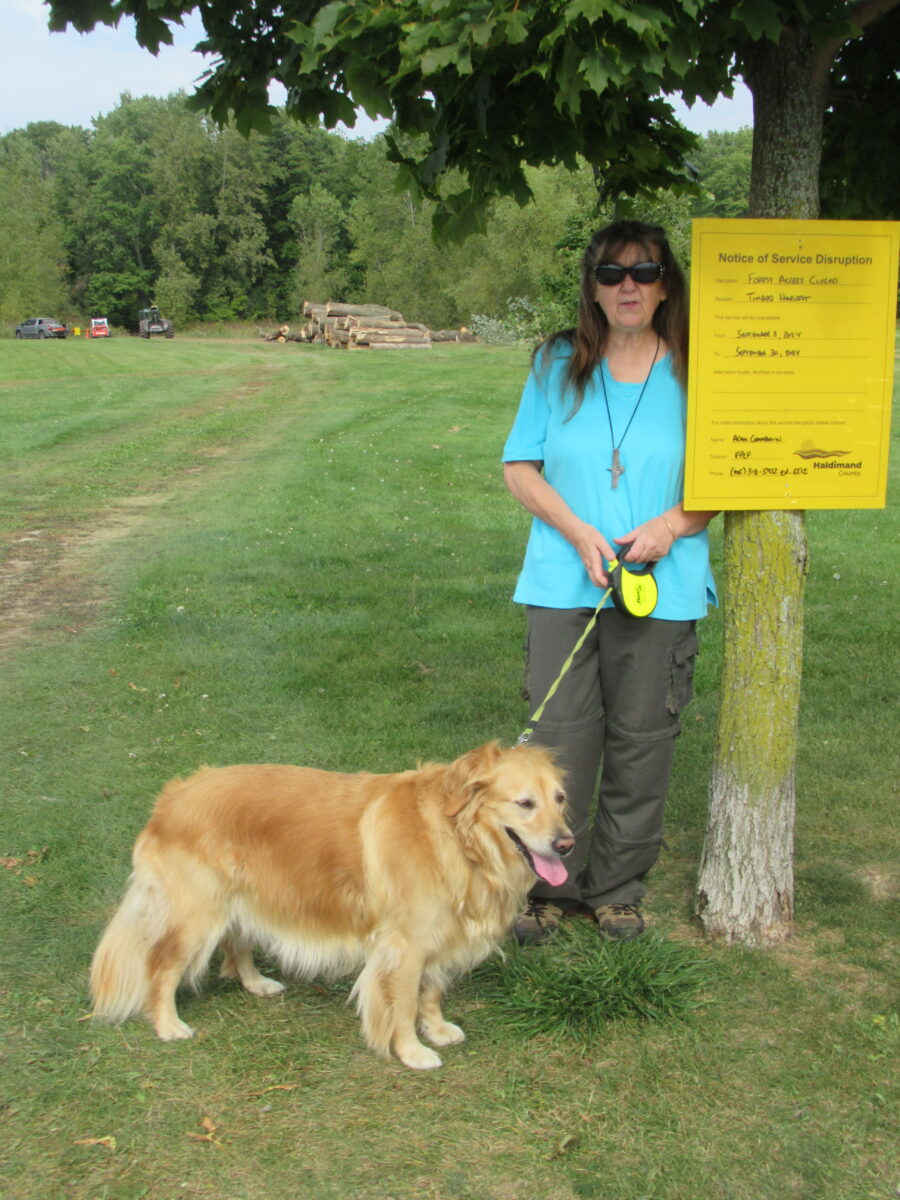
Carlson has heard from the Dunnville resident, who did not answer calls for comment, that “they are logging seven days a week from dawn to dusk. He says they have marked all the oldest and tallest trees and red oaks.”
Red oaks can live up to 500 years, providing shelter for many wildlife species and absorbing significant amounts of carbon each year.
Haldimand County representative Kyra Hayes responded to Carlson’s concerns.
After conducting a title search at the Land Registry Office, Hayes confirmed that the property was transferred to the former Town of Dunnville in 1988 for a purchase price of $85,000.
“There were no agreements on title as to the required use of the lands by the municipality and the County does not have anything on file pertaining to restricted uses,” said Hayes.
She said that the County believes in sustainable management of areas like the Pyle lot, noting the “economic, environmental, and social benefits” of doing so.
The stated objectives of the Pyle Woodlot timber harvest are to cost effectively:
- Remove poorly formed, dead, and diseased trees;
- Remove hazardous trees along the edges;
- Increase the amount of downed woody debris to provide habitat and recharge soil nutrients;
- Create gaps in the canopy and create space for young trees to grow;
- Encourage the regeneration of species such as cherry and oak;
- Increase the overall diversity of the age of the trees in the forest; and
- Increase the growing space around the remaining trees to provide more light, water, and nutrient resources to promote growth.
The timber harvest is being conducted under the Ministry of Natural Resources and Forestry (MNRF) guidelines for southern Ontario.
Hayes says this ensures the proper implementation of harvest, renewal, and maintenance activities appropriate for the forest and environmental conditions, while minimizing detriment to forest values including significant ecosystems, important fish and wildlife habitat, soil and water quality and quantity, forest productivity, health, esthetics, and recreational opportunities of the landscape.
“The tree-cutting plan was prepared by a Registered Professional Forester (RPF) following a single-tree selection system, which emulates the natural process of single trees dying and opening up canopy gaps dominant in mature/old-growth forests,” said Hayes.
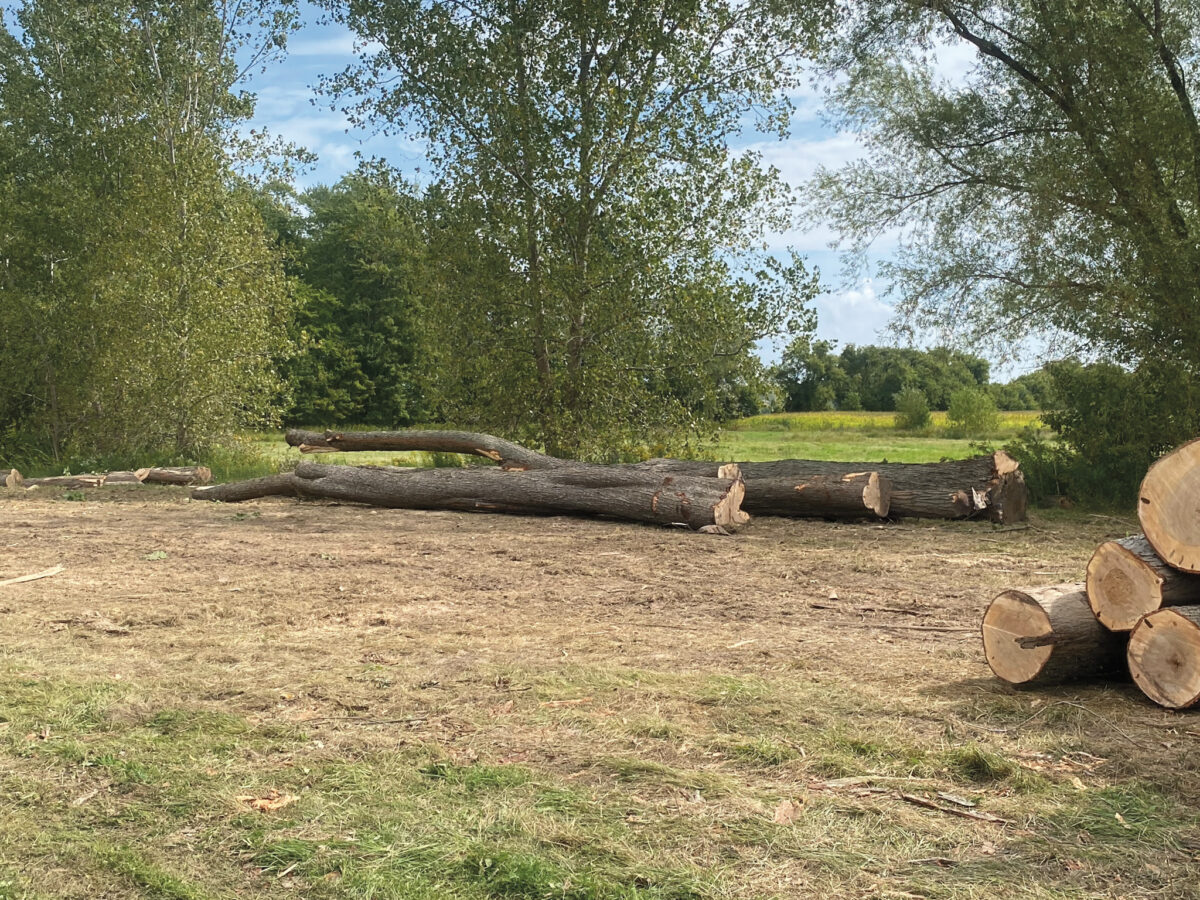
“The trees to be cut were selected following the Ontario Tree Marking Guide, which reduces the impact on wildlife and biodiversity by increasing species, ecosystem, and genetic diversity; retaining stick nests; increasing downed woody debris; protecting riparian habitat; and retaining cavity trees, mast (food) trees, scattered conifers, and veteran (old) trees.”
She added that Haldimand County “appreciates the level of concern the community has for its greenspace and environmental assets. We can assure residents that the County values environmental stewardship and the activities taking place will ultimately benefit this important municipal property.”
Carlson confirmed that much of the same information was relayed to her by County Forestry Project Manager Adam Chamberlain in a phone conversation following her initial email to The Press.
From that conversation, she took that the largest trees may be targeted to make the openings in the canopy for young trees to thrive, ensuring more diversity in the forest.
Carlson noted her desire to do more research on the harvest, but ultimately she hopes to see more communication about such projects in the future.
“I would wish, and will ask them, that towns sign such work with information that the public can read, so they understand what is happening,” concluded Carlson.
“If they had posted what Adam told me on their website and also put a notice in the paper … then there would not have been this distress by the resident that called me.”

